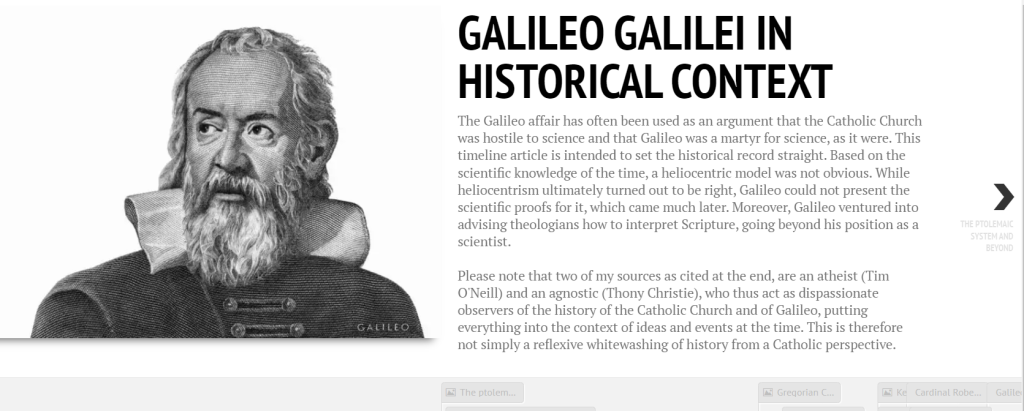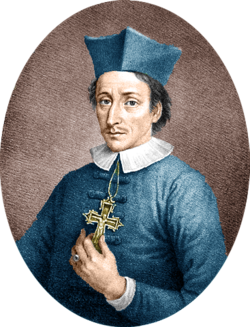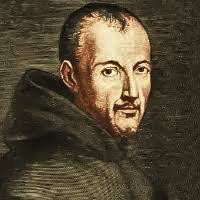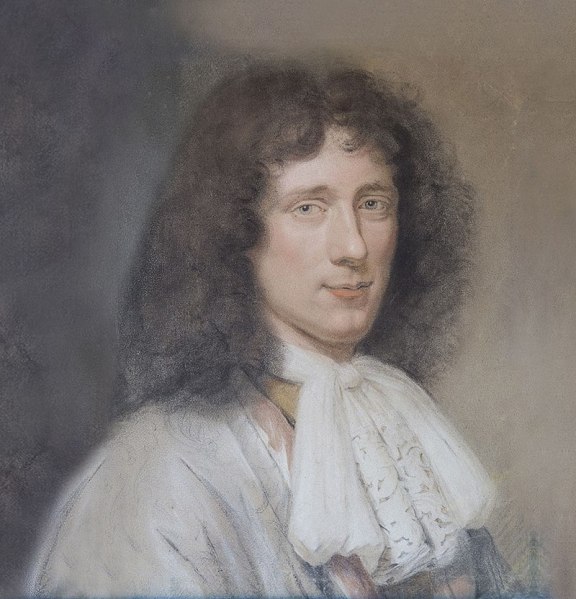Christopher Clavius, S.J. (25 March 1538 – 06 Feb 1612) was a German Jesuit known for his reform of the calendar, and a mathematician and gifted educator. He joined the recently founded Jesuit order in 1555 and was sent to Coimbra, Portugal, to pursue his studies. On 21 August 1560, he observed a sun eclipse, an event which convinced him to devote his life to mathematical and astronomical study. Following this eclipse observation, he went to Italy later in 1560 and studied theology at the Jesuit Collegio Romano in Rome. He was ordained in 1564. He remained at the Collegio Romano were he began teaching mathematics in the year of his ordination. In fact, except for a period in Naples around 1596 and a visit to Spain in 1597, Clavius was to remain Professor of Mathematics at the Collegio Romano for the rest of his life. He continued with his studies in Theology and became a full member of the Jesuit Order in 1575.
in 1579, he was elected as member by Pope Gregory XIII to the commission to oversee the reform of the calendar. The old Julian Calendar had been established by an edict of Julius Caesar in 45 BC. Because the system of Julian years and leap years did not correspond exactly to the length of the astronomical year, dates of important Christian feasts had gotten out of alignment with the seasons. This commission adopted the ideas for calendar reform of Aloysius Lillius, with some modifications, and in 1582 Pope Gregory XIII promulgated the new calendar. Catholic countries quickly adopted the “Gregorian calendar,” but Protestant and Eastern Orthodox countries only slowly followed. In 1588, it became his role to explain and defend the calendar reform, and he did so in Novi calendarii romani apologia and subsequent works to counter arguments coming from Protestants, but also from astronomers and mathematicians.
Galileo Galilei was familiar with Clavius’s books, and he visited Clavius during his first trip to Rome in 1587. After that they corresponded from time to time about mathematical problems, and Clavius sent Galileo copies of his books as they appeared. Clavius was and remained a defender of the geocentric system although he was impressed by Galilei’s telescopic discoveries as he wrote in 1611, a year prior to his death.
His true and lasting influence was the adoption of rigorous mathematical curricula in Jesuit colleges, at a time when the importance of mathematics in natural science (then called “natural philosophy”) was widely underappreciated. He wrote widely used textbooks and influenced future generations of astronomers and mathematicians.
Image: Christopher Clavius. Line engraving by E. de Boulonois., Wikimedia
Sources:
Thony Christie, A loser who was really a winner.
Christopher Clavius (1537-1612), The Galileo Project
J J O’Connor and E F Robertson, Christopher Clavius
Stephen M. Barr and Andrew Kassebaum, Important Catholic Scientists of the Past, Christopher Clavius (new on the website of the Society of Catholic Scientists)
Thony Christie, Christopher and the calendar







 On 25 November 1686, Niels Stensen died in Schwerin, at the age of 48. He was a Danish anatomist, palaeontologist and geologist. The mineral stenonite was named in his honour. He was ordained a Catholic bishop in 1677 in Italy and moved to the Lutheran part of Germany.
On 25 November 1686, Niels Stensen died in Schwerin, at the age of 48. He was a Danish anatomist, palaeontologist and geologist. The mineral stenonite was named in his honour. He was ordained a Catholic bishop in 1677 in Italy and moved to the Lutheran part of Germany.

